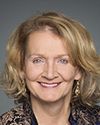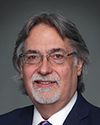Madam Chair and committee members, good afternoon.
Thank you for the invitation to discuss the role that the Canadian Armed Forces has played in this whole-of-government response to the COVID-19 pandemic.
As mentioned, I'm Major-General Dany Fortin. I'm currently the chief of staff of the Canadian Joint Operations Command, which oversees the execution of domestic and expeditionary operations.
I am accompanied today by Rear-Admiral Rebecca Patterson, the commander of the Canadian Armed Forces health services group.
Also with me are Brigadier-General Conrad Mialkowski, commander of the 4th Canadian Division and Joint Task Force (Central), headquartered in Toronto and
Brigadier-General Gervais Carpentier, commander of the 2nd Canadian Division and Joint Task Force (East),
headquartered in Montreal.
We have been closely involved in the planning and execution of Operation Laser, the CAF response to the pandemic.
As COVID-19 evolved and took on global pandemic proportions last March, a great deal was unknown. The CAF and DND rapidly adopted measures designed to protect their own members and position the force to be able to respond effectively to the priorities of the Government of Canada in close co-ordination with our federal, provincial and territorial partners.
The CAF went through a wide range of scenario-based planning and prepared for a potential large-scale and enduring domestic response to pandemic-related requests for assistance across the country. Nonetheless, we also had to be poised for the possibility of having to simultaneously assist Canadians dealing with floods and wild fires during a pandemic.
We ensured that general purpose task forces were ready to deploy in each of our six regional joint task forces. Royal Canadian Air Force assets were assigned specific support roles and others put on reduced notice to move. Ships and crews were made available on each coast, and Canadian Rangers were activated to support the unique needs of our isolated communities.
At the peak of the first wave, thousands of service members, many with stay-at-home orders, were mobilized under a pan-national joint task force Laser. Others were dispersed and on standby to support.
The CAF has provided unwavering support to Canadians across the nation throughout this unprecedented crisis. Canadian Rangers were instrumental in reinforcing the public health measures in their communities. Logistics experts helped Public Health Agency colleagues strengthen the medical PPE chain, and Canadian Armed Forces health professionals assisted with contact tracing, among other things.
But what Canadians may remember the most was our support to long-term care facilities. In April, the Government of Canada received requests for assistance in managing the deteriorating situation in long-term care facilities in the provinces of Quebec and Ontario.
From April to June 2020, the CAF deployed approximately 1,700 medical and non-medical support personnel in total to provide support to afflicted long-term care facilities identified by provincial authorities. These members, who included a number of CAF medical personnel, were properly trained and were equipped with medical-grade PPE. This ensured that they were prepared to carry out this non-standard military task to safely and effectively support a uniquely vulnerable population. Our effort helped curb the crisis and stabilize the situation in a total of 54 facilities: 47 in greater Montreal and seven in the greater Toronto area.
Our CAF members exemplified selfless service while working alongside dedicated health care workers, contributing to saving many lives.
The leaders have an ultimate obligation to the troops they lead to ensure they are as protected as they can be. As I previously mentioned, all of our troops were provided with approved medical grade PPE and were trained in its use. Still, 55 Canadian Armed Forces members—41 in Quebec and 14 in Ontario—working in long-term care facilities tested positive for COVID-19. All recovered and none have required hospital care.
We also recognized that this deployment could affect our members mentally as well as physically. So we mobilized mental health support during the deployment to ensure that those who needed it had access to that support.
As previously stated to the committee by my colleague Major General Cadieu, CAF members assigned to long-term care facilities had a duty to report their findings while taking immediate corrective action alongside civilian colleagues to provide dignified care and avoid becoming threat vectors themselves.
Let me close by acknowledging that we have all learned a great deal over the last months, as have Canadians. The safety, well-being and resilience of CAF and DND personnel are always our paramount concern. CAF and DND remain poised to support Canadians alongside our colleagues in other departments and agencies. Lessons from the first wave were internalized. We have since procured more PPE and are in the process of gaining our own testing capability.
Today, liaison officers are engaged with our federal, provincial and territorial teammates to ensure a shared awareness and anticipate government contingency planning. CAF personnel are supporting the Public Health Agency of Canada with a plan for COVID-19 vaccine distribution. The CAF has carefully resumed recruiting and training, both distributed and in CAF establishments across the country, with strict adherence to health protection measures.
The CDS and the deputy minister gave direction to the CAF and the Department of National Defence to adopt robust risk mitigation, protect the force and stand ready to conduct operations in support of the nation.
Madam Chair, ladies and gentlemen, we look forward to taking your questions.
Thank you.












